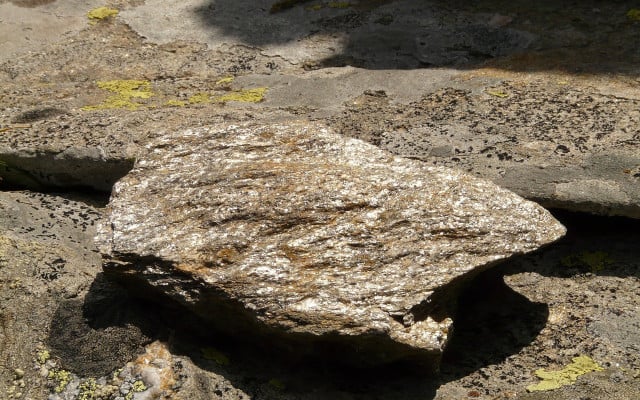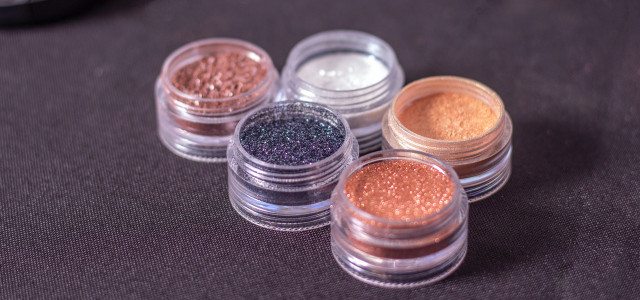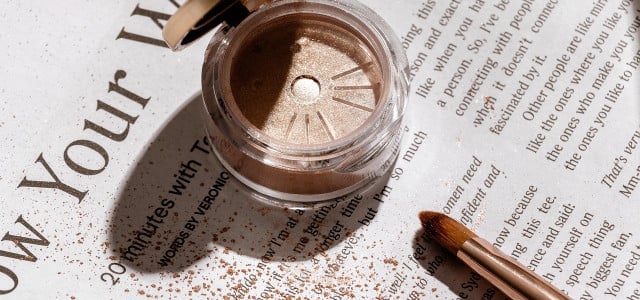What’s all the fuss about mica in makeup? Mica is often used in cosmetics to add a pearlescent effect, but the inhumane circumstances under which these minerals are mined, not to mention the heavy reliance on child labor, makes that sparkle much less appealing.
Mica is the stuff that makes your eyeshadow, lipgloss or bronzer glow. It also gives your shampoo, toothpaste and nail polish a “pearlescent effect” (Responsible Mica Initiative). But that shine comes at a heavy price. The mining of this mineral is often highly unethical, involving worker exploitation and child labor. Though this issue has been covered by the media for years, very few people are aware of the problem with mica in makeup, as well as in other products and industries.
Mica: What It Is and Why It Is So Problematic

What is mica, exactly? Mica refers to a group of natural minerals that occur in granite, sandstone and marble. Among the 37 minerals that belong to the group, muscovite and phlogopite are the most prominent in terms of their commercial value (USGS). Damourite, annite, alurgite, gilbertite, and fuchsite are also very common. Mica in makeup adds certain beauty effects, but these minerals are also valued in other industries for their electrical and insulating properties, as well as their ability to reflect UV rays.
The minerals are mined in 35 countries. The biggest exporters are Madagascar and India, closely followed by China and Brazil. According to investigations by Terre des Hommes and SOMO, all of these countries are suspected of child labor in mica mining and illegal mica mining operations (Report: Global Mica Mining and the Impact on Children’s Rights, p.71). Though these are the “red flag” countries in the context of mica mining, the list goes on.
Terre des Hommes further suggests that up to 22,000 children are working in India’s mines. Some are as young as four years old. As stated by the organization, they often work alongside their parents, who have to bring even the youngest into the mines, both in the face of poverty and for lack of childcare. Many adults and children die in mining accidents that occur in the deep and unsecured dig holes. Others suffer lung damage from the dust that comes from chipping the minerals. According to Terre des Hommes, the COVID-19 pandemic drove even more families in India into poverty. Many of them now depend on working in the mines.
In response to these catastrophic conditions, in 2017, several organizations and international corporations joined forces and formed the Responsible Mica Initiative. This Coalition for Action aims to eliminate child labor and the poor working conditions from the supply chain.
Alternatives to Unethically Sourced Mica in Makeup



To check whether there is any mica in your makeup, look for an ingredient labelled as CI 77019. Unfortunately, you won’t be able to tell what country the product originates from. The uncomfortable truth is that even some brands that pride themselves with labels such as “cruelty-free” may be sourcing mica that has been produced under unethical working conditions. So far, there is no certification or label that can guarantee that mica has been produced under fair working conditions.
Here are some brands that explicitly state that they use ethically sourced or lab-created mica. (Yes, there is such a thing as synthetic mica, but this product comes with its own concerns in terms of transparency):
Many others companies emphasize that their makeup is cruelty-free, including:
Although having to take companies at their word is unavoidable, you can check to see whether they are participating in the Responsible Mica Initiative. At the very least, this is an indication of whether or not this topic is on their radar at all. For now, if you want to be sure to avoid unethical mica, do your best to avoid products that contain the mineral all together.
Do you like this post?







